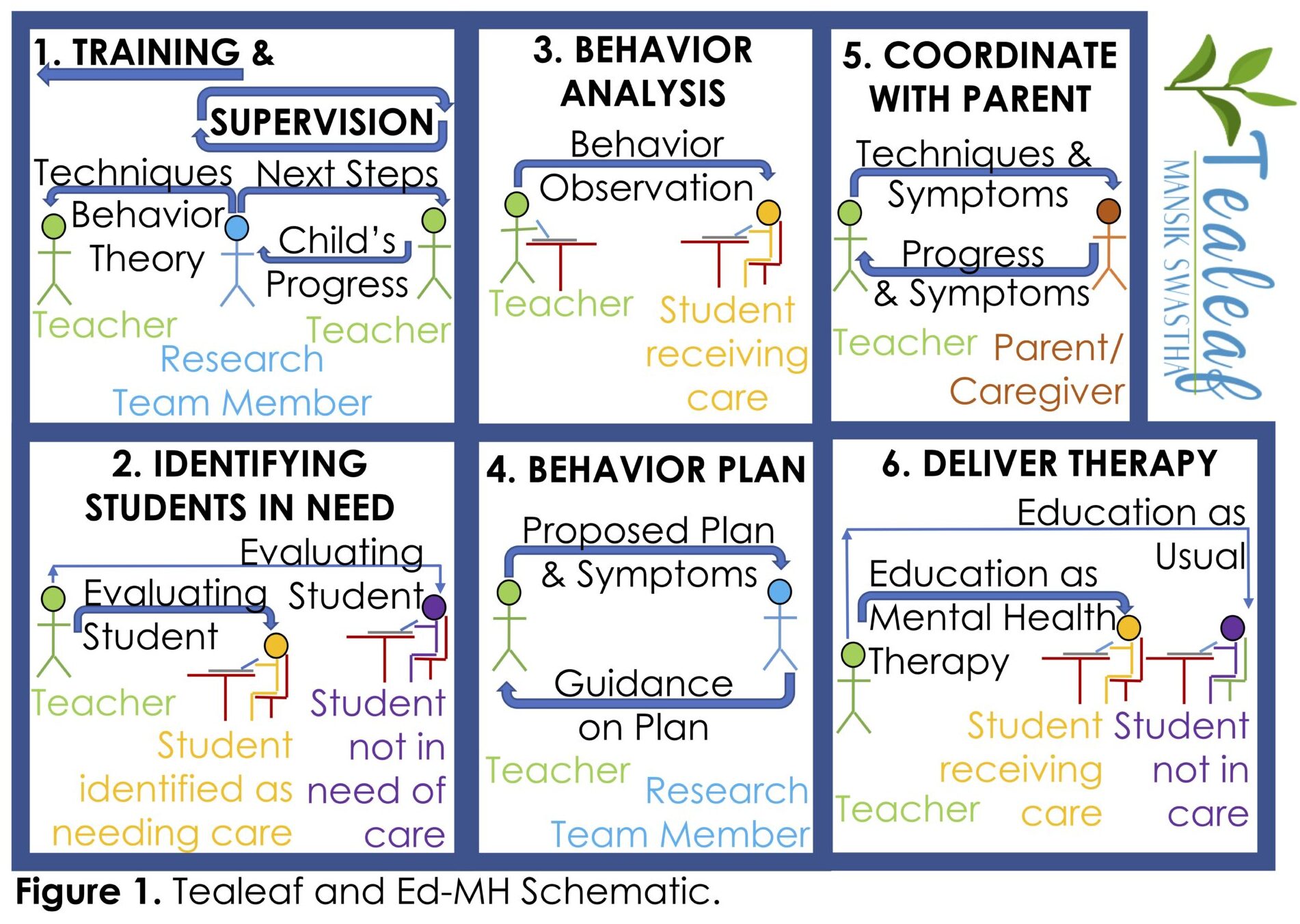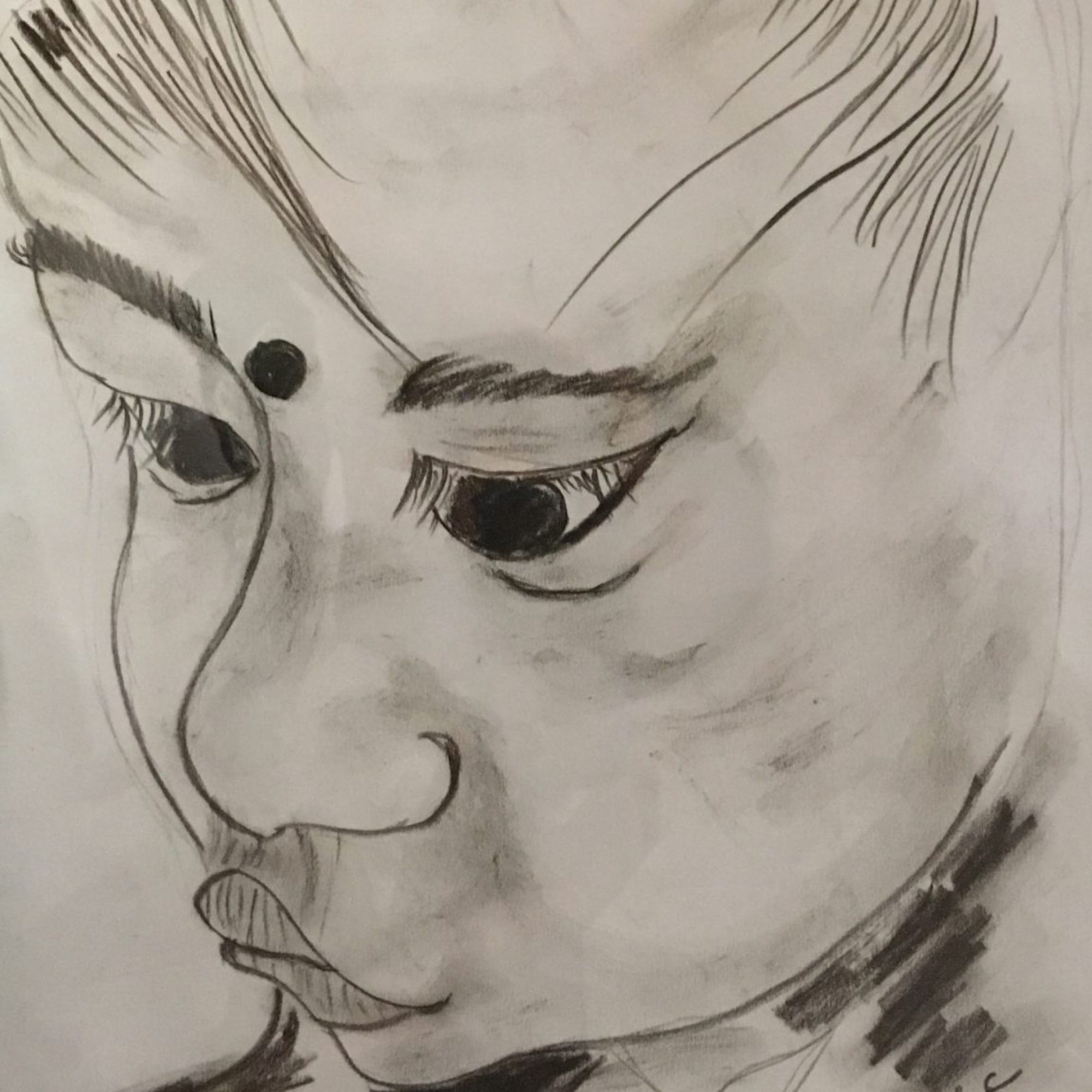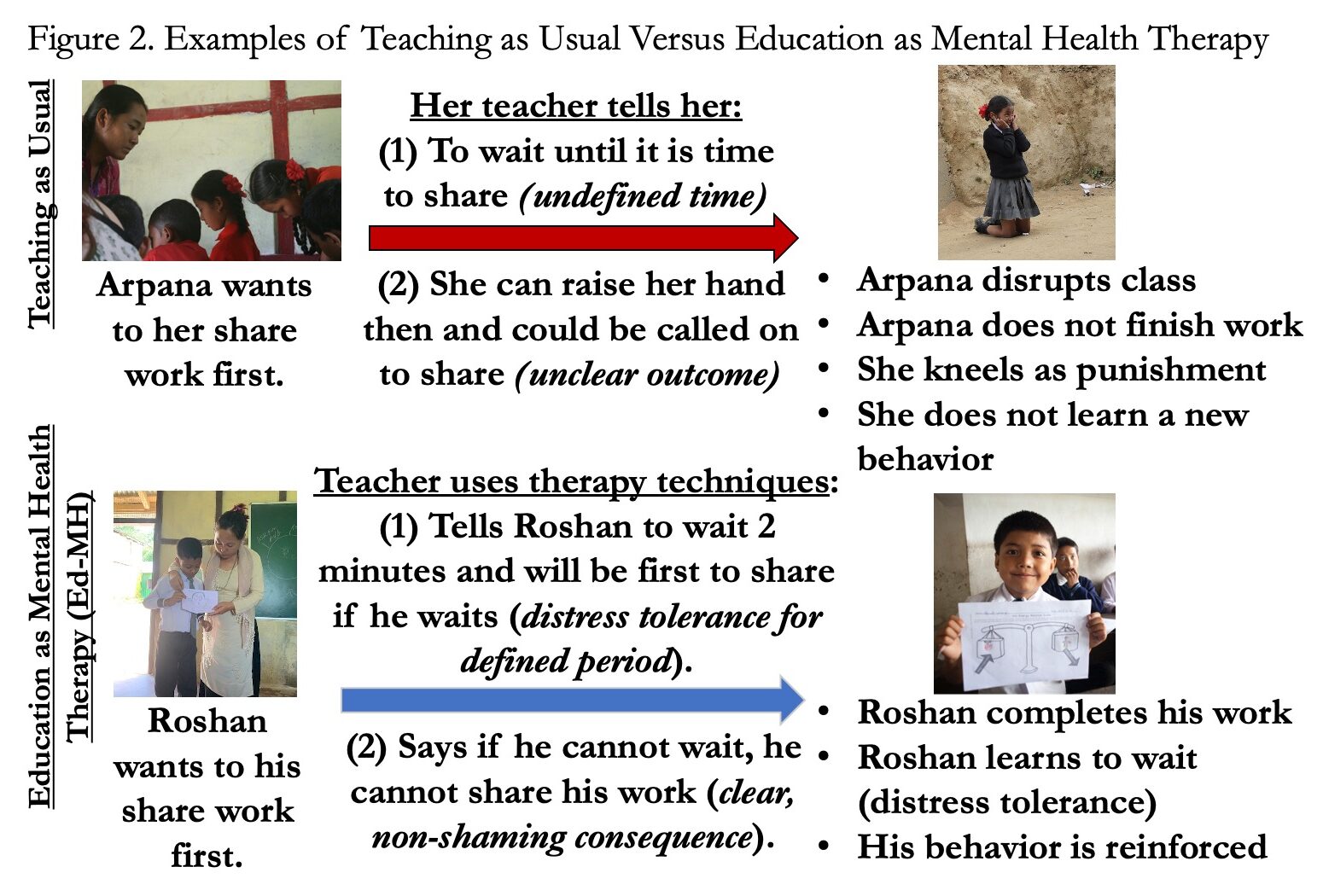 Teachers deliver task-shifted children’s mental health care to their students in our alternative system of care called “Tealeaf” (Teachers Leading the Frontlines – Mansik Swastha [Mental Health in Nepali]). The name “Tealeaf” comes from Darjeeling, where the economy heavily relies on tea production, and highlights that the system of care is an innovation born from the needs and efforts of the Darjeeling community. Rooted in Darjeeling, the name “Tealeaf” then advocates that teachers can formally lead the frontlines in addressing child mental health (and already do informally), as is happening in Darjeeling. Finally, the intervention’s name is also a prediction of the future, that reading this “tealeaf” shows that the future of addressing the child mental health burden lies in already existing resources – task-shifting, teachers, and the community.
Teachers deliver task-shifted children’s mental health care to their students in our alternative system of care called “Tealeaf” (Teachers Leading the Frontlines – Mansik Swastha [Mental Health in Nepali]). The name “Tealeaf” comes from Darjeeling, where the economy heavily relies on tea production, and highlights that the system of care is an innovation born from the needs and efforts of the Darjeeling community. Rooted in Darjeeling, the name “Tealeaf” then advocates that teachers can formally lead the frontlines in addressing child mental health (and already do informally), as is happening in Darjeeling. Finally, the intervention’s name is also a prediction of the future, that reading this “tealeaf” shows that the future of addressing the child mental health burden lies in already existing resources – task-shifting, teachers, and the community.
Divided into 6 components (Figure 1), Tealeaf transforms care from the traditional model of weekly office visits to one where children receive in the moment care in their natural environment, every school day. Teachers are trained and supervised (component #1) to identify students in need (component #2), complete a behavior analysis for each child selected (component #3), create a behavior plan informed by the behavior analysis to guide care delivery (component #4), coordinate care with parents (component #5), and deliver Ed-MH therapy (component #6).
Care is embedded into existing interactions between teachers and students, turning moments of informal support into doses of formal care. Teachers’ use of academically contextualized therapeutic techniques forms the basis of our novel therapy, “education as mental health therapy” (Ed-MH), a therapy only teachers or teaching assistants can deliver. Ed-MH is comprised of evidence-based measures, derived from Cognitive Behavioral Therapy, Dialectical Behavior Therapy, and Behavior Theory, designed to reinforce adaptive behavior while also being able to respond to crises and moments of struggle as they happen in real time. The “dose” of care is each interaction between the teacher and student, where the teacher uses evidence-based techniques during the interaction.
To illustrate an Ed-MH dose, we compare Ed-MH to education as usual in Figure 2.
Both the education as usual and Ed-MH examples start with the same scenario, where a student is eager to share their work with the class. In education as usual, the teacher acts as one would expect. In the Ed-MH example, the teacher uses two brief therapy techniques in the same moment the teacher implementing education as usual also experienced. As in Figure 2, education as usual leads to incomplete academic work and no change to the student’s mental health, while Ed-MH may lead to both completed academic work and mental health being addressed.

